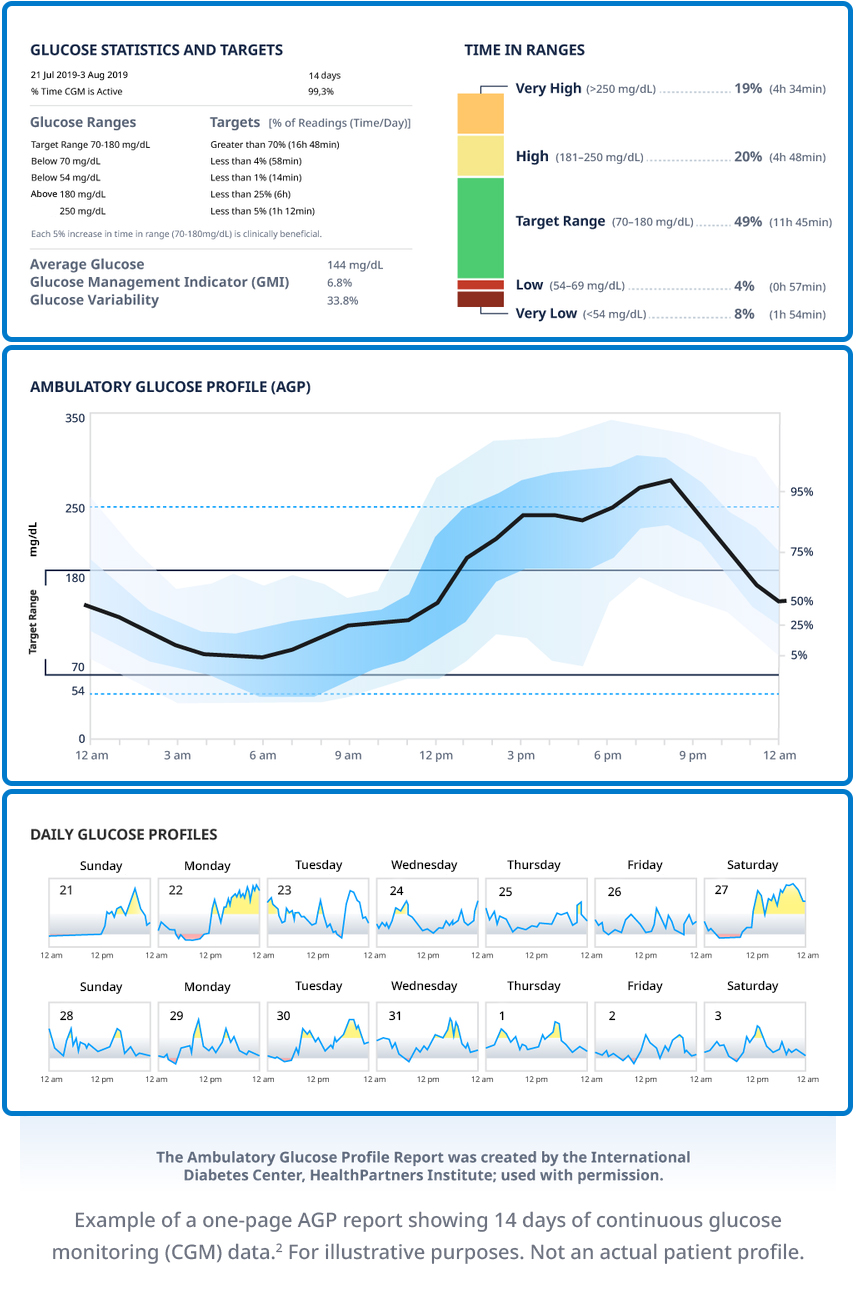USING TIME IN RANGE (TIR) TO CREATE AN ACTION PLAN FOR EFFECTIVE GLYCEMIC CONTROL
When discussing Time in Range (TIR) with people with diabetes, it is important to understand their daily habits. Healthcare professionals should examine the ambulatory glucose profile (AGP) report (see example below), which includes metrics such as TIR, Time Above Range (TAR), and Time Below Range (TBR). It also displays mean glucose levels and glycemic variability throughout each day and night over a certain time period (normally 14 days).1,2



Dr Alice Cheng, University of Toronto, shares her recommendations for discussing CGM data with patients.
Healthcare professional has received a fee from Novo Nordisk Inc. for her participation.
During appointments, consider taking the following steps1‑4:
- Review hemoglobin A1c (HbA1c) levels
- Analyze the 14-day data from the AGP report, with a particular focus on TIR, TBR, TAR, and glycemic variability
- In the AGP stacked bar chart:
- TIR is reflected in green and should be at least 70% of the day
- TBR, reflected in red (low) and dark red (very low), should be less than 4% of the day. Less than 1% of the day should be spent in the dark red “very low” range
- TAR, reflected in yellow (high) and orange (very high), should be less than 25% of the day. Less than 5% of the day should be spent in the orange “very high” range
- If the stacked bar chart in the AGP report has a higher proportion of readings on either side of the green section, have a conversation with the person about why hypoglycemia or hyperglycemia may be occurring
- Review the AGP report to identify the timings and magnitudes of the problem areas. The first priority is to address hypoglycemia
- It may be necessary to review multiple daily glucose profiles to identify any particular weekdays or weekends when the patterns are most notable
- Have a conversation with the person about how they might prevent these fluctuations in glucose levels in the future
- Review the treatment regimen and agree on an action plan
To help people with diabetes understand how TIR relates to their diabetes management, it is useful to frame TIR targets as hours and minutes, rather than percentages.1 For example, instead of advising people to spend no more than 4% of the day below range, explain how they should aim to spend less than 1 hour per day below range. This eliminates any guesswork and provides clear and actionable targets.
Healthcare professionals should also review other variables that may affect a person’s glucose profile when making decisions about potential therapeutic interventions. These may include factors such as age, weight, and body mass index; diabetes treatment, insulin dosage, and timing of doses; and sleep, diet, and exercise habits.1,2
- Battelino T, Danne T, Bergenstal RM, et al. Clinical Targets for Continuous Glucose Monitoring Data Interpretation: Recommendations From the International Consensus on Time in Range. Diabetes Care. 2019;42(8):1593-1603.
- American Diabetes Association. Standards of Care in Diabetes—2023. Diabetes Care. 2023;46(suppl 1):S1-S291.
- Wright EE Jr, Morgan K, Fu DK, Wilkins N, et al. Time in Range: How to Measure It, How to Report It, and Its Practical Application in Clinical Decision-Making. Clin Diabetes. 2020;38(5):439-448.
- Wysham CH, Kruger DF. Practical Consideration for Initiating and Utilizing Flash Continuous Glucose Monitoring in clinical Practice. Journal or Endocrine Society. 2021. Epub ahead of print. doi:10.1210/jendso/bvab064.